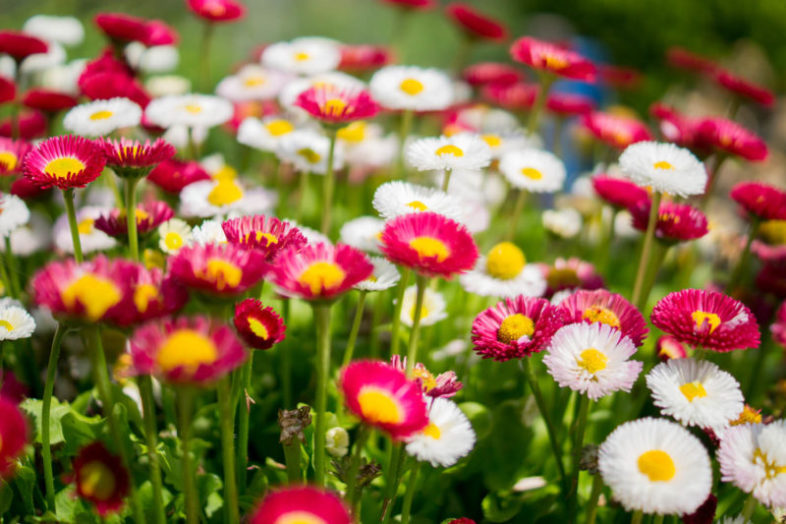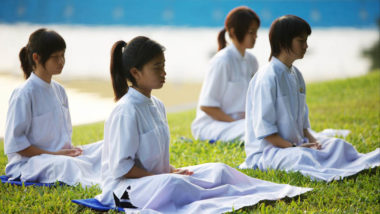Setting Up Your Stress Relieving Garden
There’s no doubt that everyone experiences stress. Sometimes the stress can be so difficult to deal with that people will seek a way to relieve it. Since it’s healthier to find stress relief than it is to live with it, it’s wise to find a way to regain your peace.
One of the best ways to get rid of stress and regain peace that might surprise you is to get involved in gardening. Gardening actually tops the list of stress relieving activities, even above exercising. It’s easy to get started gardening even if you’ve never planted or harvested anything before.
The Best Place to Set Up Your Garden
Before you get started with your garden, you’ll need to know where you’re going to have it located. There are plenty of options when it comes to gardening. You might envision having a large backyard where you can portion off a part of it and dedicate it to your gardening use.
While that’s certainly one way, you don’t have to have a backyard in order to garden. You don’t even have to have a yard at all because you can garden right on your back deck or patio if you don’t have the yard space.
Although stress relieving gardens are easy to get started and easy to maintain, you can’t just toss things into a space and hope for the best. It does take some planning.
So before you go out and buy a ton of seeds or plants, you have to take a moment to consider what your goal is. You need to first decide what kind of garden you want to have.
Some people dedicate a garden solely for one purpose such as for planting vegetables. Others focus on having more fruit plants than anything else. There are also stress relieving gardens that are dedicated entirely to growing flowers.
Whichever one you choose to plant is up to you. Pick the one that you think you’ll get the most enjoyment out of because if it doesn’t appeal to you, it will be more like work than fun and you won’t be happy about it.
Once you decide what it is that you want to grow, you have to check out the location to make sure that it’s appropriate for growing things. Not all soil types are as helpful for growing things as others are.
You’ll have to look at the amount of space that you have as well as if all of the factors are right for you to have a successful garden. One of the things that you’ll need to consider is the drainage ability of the soil.
If you plant your garden in an area where there’s going to be too much saturation after it rains, it could end up killing whatever you plant. And if the soil is too dry, then the items won’t be able to thrive that way, either.
Most people aren’t sure either whether they need to plant in direct sunlight or in a shady area of the yard. Whether you plant in sunlight or shade depends on what you’re planting.
Some items have to have more sunlight while others need shade or partial shade in order to thrive. Before you plant anything with a garden, you should do a study of your yard and pay attention to how the sunlight hits which areas of your yard and how long the sunlight is on that patch of ground.
Different items need different amounts of sunlight so a good rule of thumb is to plant your garden where you have at least five hours of sunlight for the plants that need it.
If you’re using container gardening, you can just move the containers around as long as they’re portable so that they get the sunlight they need throughout the day.
How to Easily Set Up a Stress Relieving Garden to Gain Tranquility
When it comes to gardening, most people are pretty good at planning. They’ll determine ahead of time which spots in the yard are best. Or they’ll lay out all of the potential issues with container gardening on the back deck and plan for anything that might derail their success.
But the number one issue that too many people overlook is how to set up a garden easily so that it provides the most tranquility. The biggest issue you’re going to want to look at has to do with convenience.
You’ll want to figure in all the aspects that have to do with gardening. That’s going to be things like taking care of the soil, fertilizing if you have to, taking care of weeds, watching out for detriments, making sure the plants get sunshine and controlling the amount of water the garden receives.
Taking care of the soil involves making sure it’s aerated properly and checking the pH balance. Your items won’t grow as well if the pH balance is off. You can get the soil tested yourself by the agriculture department of a local college.
You’ll be able to determine by the pH balance if your soil needs to be treated or not. Next, you’ll want to make sure that you practice good weed control. Since you don’t want to use products that are harmful to your garden, you’ll need a more natural way to take care of the soil.
You’ll also want to take steps against weeds before you plant anything so that weeds aren’t as plentiful after you plant. You can treat the soil with an organic weed killer that doesn’t kill gardening plants before you plant them.
You can also install landscape fabric which prevents the growth of weeds. When you set up your stress relieving garden, make sure you’re aware of any trees before you plant.
You might think that you’re planting your garden far enough away from trees so that it won’t cause problems. However, trees have roots that grow out in a long spread out growth pattern in addition to burrowing down into the soil.
What root spread does is that it can grow several feet away from the base of the tree, beneath the spot where you intend to plant your garden. These roots can grow bigger and thicker and end up damaging or pushing out the roots of whatever you plant.
You’ll want to make sure that all of the tools that you use are convenient for you. It won’t be any fun if you have to lug everything from a great distance. If you don’t have a shed close enough to your garden to be able to store your gardening things, then get a gardening cart on wheels that you can push out to the garden so you’ll have all your tools on hand.
Planting Vegetables in a Stress Relieving Garden
Some vegetables are much easier to grow than other ones are. However, when it comes to gardening, you shouldn’t simply choose to plant vegetables based on how easy they are to grow.
Instead, you need to make your choices based on what you like. Remember that the purpose of a stress relieving garden is to keep things manageable and to find the joy and peace spending time in a garden.
With that in mind, you’ll want to start slow and grow your garden as you get accustomed to it. It’s better to add to your garden than it is to plant so many different kinds of vegetables that your garden becomes huge and you end up feeling like you just can’t take care of everything you’ve planted.
With that in mind, decide what vegetables you want to eat and the quantity of them that you’ll eat. Remember that many vegetables will grow all season long so they’ll keep producing.
Choose a mixture of continual harvest vegetables and ones that only have one crop. The one crop vegetables are ones you’ll have to plant every time you want to bring in a harvest of them.
To set up a healthy producing vegetable garden, you have to give the items their three basic needs. These are right soil, sunlight and water. The majority of vegetables that you plant have to have about 7 to 8 hours of sunlight.
Without the right amount of sun, they won’t grow as well and they’ll be easier prey for things that will destroy them. If you live in an area known for hot summer seasons you’ll need to make sure you check the moisture level of your garden more frequently.
Soil that’s too dry will quickly wilt and then kill your vegetable plants. The soil that you use will need to be able to drain easily. You want it to be moist, but not too wet.
If it’s too wet, you end up with root rot. You should water your garden when the soil feels crumbly or dry. Unless the weather is particularly hot or humid, that means about twice a week you’ll need to water.
Don’t make the mistake of letting the water sit on the leaves. The leaves don’t absorb the moisture. Be careful about trying to make planting the garden too convenient as far as distance.
If you plant vegetables too close to a shed or your home, you’ll have to be careful about the shading cast by the structures. If the area sits in the shadow of these structures for more sunlight times than not, you don’t want to plant them there.
Keep a foot of space between your vegetable rows and plan so that your ground vegetables aren’t prevented from getting sunlight by your taller growing plants. Set up boundaries like fences to protect your vegetables from animals that would like to feast on them. If you plant marigolds around the vegetables, this flower is known to ward off pests.
Growing Fruit in Your Garden
It’s easier than you think to grow delicious fruits in your garden and there is a wide variety that you can choose from. Some of the more popular fruits to grow are apples.
Apple trees can grow well even in the hot summer months. You have to watch out for two things when you’re trying to grow apples. You have to be careful with the soil because apple trees prefer soil that’s moist but not wet.
So you would need to make sure you have a good drainage system in place for the soil. You would also need to make sure that you plant in enough space. If you pack fruit trees too closely together, they don’t get the right amount of circulation that they need and when that happens, it can cause trouble.
It allows things like the dew to remain wet on the leaves and this causes the tree to become more susceptible to rot and other pestilence. You would also need to watch out for cold air because the cold can kill the tree.
Never plant an apple tree at the foremost height if you live on a hill. Instead, aim to shelter it from wind. You can buy a variety of apple tree sizes from dwarf to average size apple trees depending on your preference.
Dwarf apple trees produce fruit faster. If you do decide to plant apple trees, you’ll need to practice cross pollination. Fruit trees lack the ability to be able to self-pollinate.
You don’t have to plant strictly apple trees to achieve cross pollination. Blueberries are another fruit that’s easy to plant in a stress relieving garden. It takes about two months for the berries to be ready to harvest in the summer months.
Always wait until the berries are completely blue before you harvest them. These shrubs need to have a lot of time in the sun and they have to have damp but not wet soil.
You’ll need to check the pH balance of the soil because these fruits need a higher level of acid in the soil to grow properly. If you like raspberries, you can easily grow these as long as you plant them in the sun and plant them in rows.
Strawberries are also a good choice and easy to grow. They need a lot of sun, acidic soil, and to be kept away from cold. It’s best to grow these in raised beds and you’ll have to stay on the lookout for slugs which love the strawberry plant.
Flowers for a Stress Relieving Garden
You can have a beautiful garden filled with a wide array of flowers that can add color and bring tranquility to your life. Even if you’re someone who tends to not be that adept at raising flowers, you can do so easily with flowers that are hardy and low maintenance.
Marigolds are flowers that grow quickly in a variety of settings. They can grow raised beds or as part of a container garden. They grow fast so from the time that you plant them to the time that you get to experience their lush colors is short.
They do need to be in the sun for best growing. Sunflowers are eye-catching flowers that can grow quite tall. They need a sunny area of the yard and they need to be protected from high winds.
Other than making sure you use something to keep the stem supported, these flowers grow well on their own with little fuss from you. If you have problems with your soil or you live in an area that doesn’t get a lot of rain, one of the best flowers that you can plant is the poppy.
These colorful flowers bloom even when the soil is dry and not as friendly to other flowers. They grow best in areas where there’s a lot of sun. All you have to do is plant the seeds and they’ll grow year after year.
Nasturtiums are trailing plants that can be found in annual or perennial varieties featuring eye catching, bold colors. When you plant these, you need to do so in the beginning for spring.
You also have to have well hydrated soil for them to grow well but they do need plenty of sunlight. They grow well even in areas where the soil isn’t that great. Another easy to grow flower for your garden is the coneflower.
These flowers grow well year after year. They’re tall flowers, often reaching heights from 4 to 5 feet. Despite their height, you won’t have to pin these to a trellis or stake them to keep them from breaking because they’re strong.
The flowers are plenty strong enough to withstand growing in dry climates as long as they’re watered. They need at least six hours of sunlight for optimal growth.
A garden can provide many benefits when it comes to alleviating stress and helping improve both your physical and mental health. But you want to properly plan it so that the task of gardening itself doesn’t become more of a burden than a benefit.
If you make a mistake along the way, don’t beat yourself up about it. There are many people who improve on a yearly basis, from season to season. Remember that each region and household has a unique set of circumstances that allows plants to thrive.
Part of this journey is nurturing your garden through many obstacles, just as you’re nurturing yourself through the chaotic moments in your life that put stress at the forefront of your thoughts.


